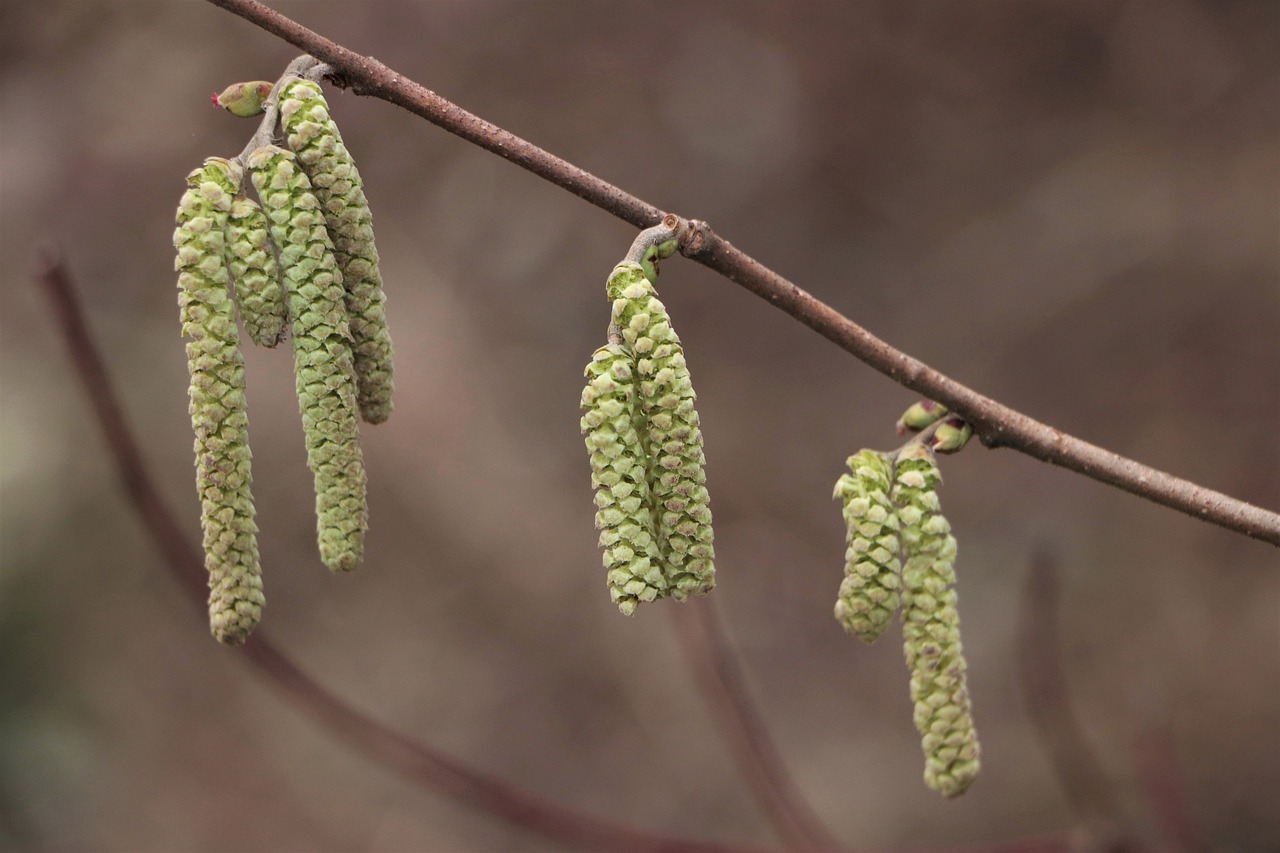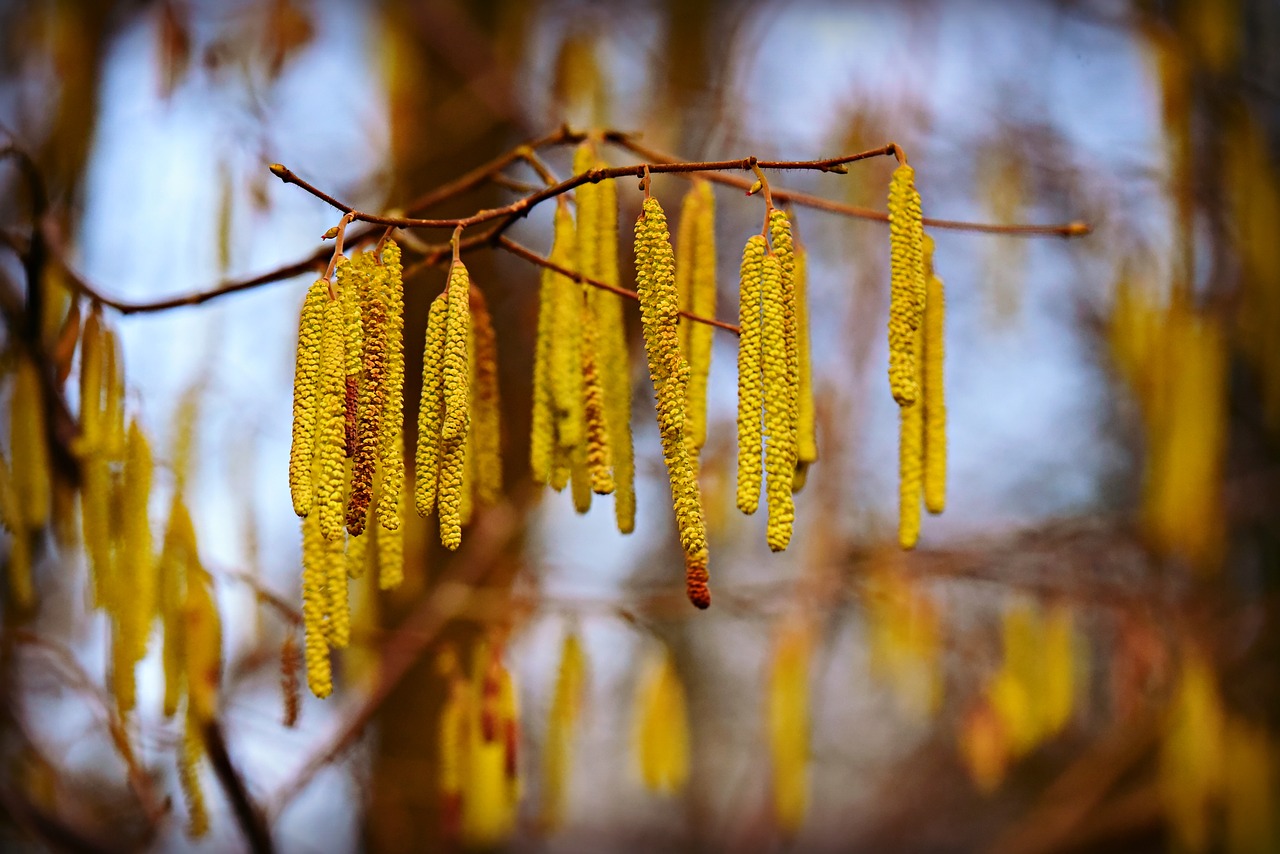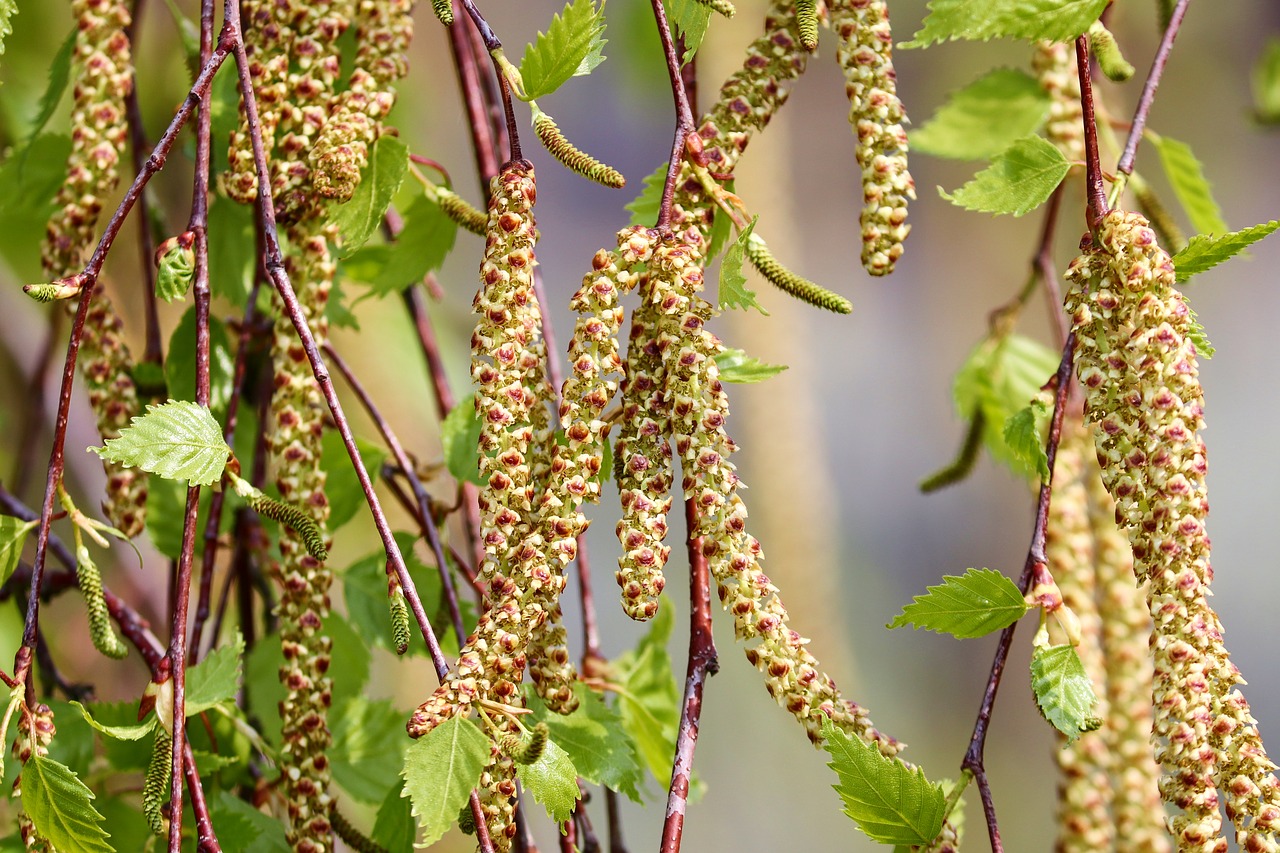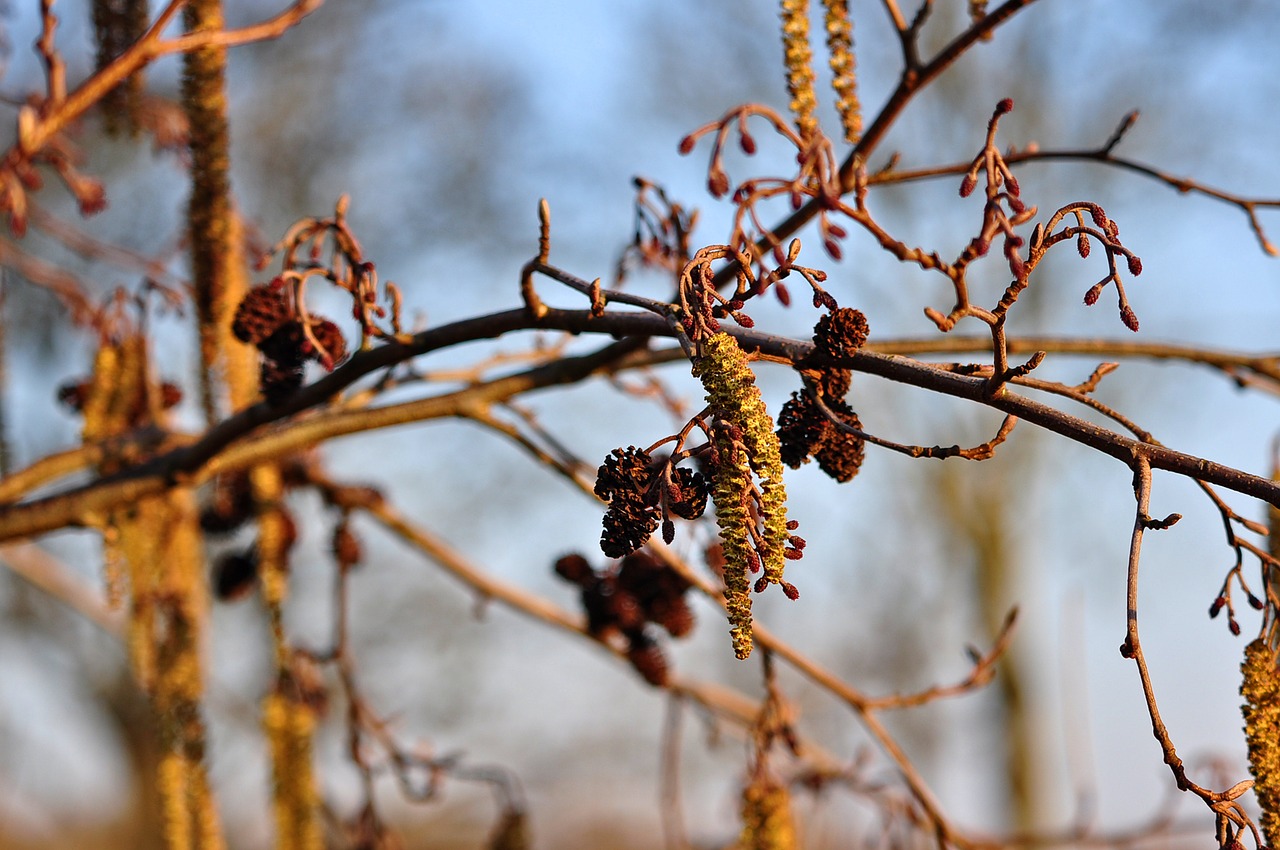
Have you ever noticed some small flowers that form clusters and hang from the trees? They are quite curious and are really beautiful. They are known as catkins. If you don't know what they are, I recommend that you keep reading.
In this article we will explain what catkins are and how they pollinate. In addition, we will name some vegetables in which we can find these beautiful flowers.
What are catkins?
Let's start by explaining what catkins are. At the botanical level they are defined as a set of flowers that, in their entirety, form a spike or cluster of several flowers that are closely packed together. Catkins are usually unisexual, that is, female or male, and hanging. They are very simple flowers that do not have sepals or petals. The female ones are reduced to the stigmata, while the male ones are reduced to the stamens.
Generally, catkins are flowers belonging to some species of trees. These usually belong to the following genres:
- Birches (Betula)
- Poplars (Populus)
- Alders (Alnus)
- Hazelnuts (Corylus)
- Chestnuts (Weather in Castanea)
- Holm oaks (Quercus ilex)
- Willows (Salix)
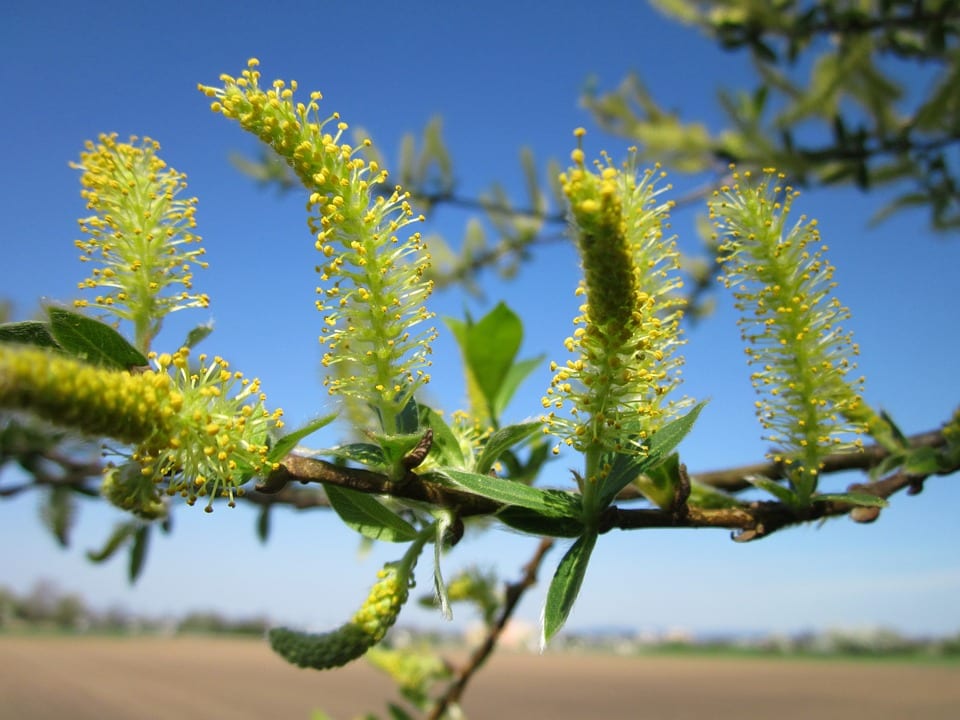
Although it is true that they are quite showy flowers, in some species of trees they cannot be seen unless binoculars are used, since they arise in the highest part of the vegetable. This happens, for example, in the case of the white, also known as white poplar.
As usual, the flowers help a lot when it comes to identifying the different plant species. So do catkins, which sometimes even have quite bright colors. Thanks to them, it can be easier for us to identify certain tree species.
How are catkins pollinated?
At the time of pollination, male flowers, which are usually grouped in catkins, are responsible for produce pollen that serves to fertilize the ovary of female flowers. For this reason, both sexes bloom at different times: While the male ones bloom in October, the female ones don't bloom until January, at least in the case of hazelnuts. In this way, the male flowers grow and when they reach maturity, the female flowers open so that fertilization can be carried out successfully.
As for the act of pollination itself, it is usually carried out by the wind. The air carries millions of tiny pollen grains produced by catkins all the way to the stigmas. After this process, the pollen tube begins to grow until it reaches the base of the stigma. Thus he enters a period of rest that usually lasts between four and five months. After this time, growth is resumed until finally the pollen ends up fertilizing the ovule. In the case of hazelnut, for example, the wall of the ovary is the shell of the hazelnut and the seed is basically the embryo. This develops until it becomes the hazelnut fruit.
What plants have catkins?
Whether in the garden or in the middle of nature, there are many possibilities to see these curious flowers. Next we will talk about four different species of trees whose catkins stand out for their beauty, thus being very popular in both public and private gardens.
White willow (Salix alba)
A tree that has some very beautiful catkins is the white willow, also known as Salix alba. In this case they are formed by long and its birth takes place in spring.
We can find the white willow in Asia, in Europe and spontaneously in North Africa. However, it is a tree that has been planted by humans in many different places for thousands of years, so it is practically impossible to say exactly what its natural area is. Both in the Balearic Islands and in the Peninsula it is quite common to find it and it is very dispersed.
Holm oak (Quercus ilex)
Also the oak, known as Quercus ilex, it has some precious catkins of yellowish and ocher color. Its flowers appear in spring and are grouped in hanging bunches.
The holm oak is a tree that It is found throughout the region belonging to the Mediterranean Sea. However, the subspecies Quercus ballota It exists throughout the Iberian Peninsula, having a fairly dense population in the interior. Instead, the subspecies Quercus ilex It is rather distributed in those areas closest to the Cantabrian and Mediterranean coast, from the Balearic Islands and Catalonia to Almería. Interestingly, in the areas where both subspecies overlap, hybrid trees grow, diluting the differentiating traits of both subspecies.
Silver birch (Betula pendula)
Another tree that has precious catkins is the silver birch or Betula pendula. In this case, the catkins are male and from March to May they lengthen until the pollen is released as the leaf buds begin to open. Instead, female catkins point upward and are quite short. After pollination, when the seeds begin to develop, they begin to hang down.
Silver birch It is distributed throughout northern Morocco, western Asia and almost all of Europe. However, in the Iberian Peninsula it is more frequent from Galicia to the Pyrenees.
White poplarthe white)
Finally it remains to highlight the white poplar, or the white. Its female flowers form long, hanging bouquets, which are catkins. These are quite thick and they normally appear in the highest part of the tree.
We can find the white poplar in North Africa, in Western Asia and in central and southern Europe. This arboreal species is widely used as an ornament or to repopulate some areas. In the Iberian Peninsula, the white poplar grows in almost all regions naturally, With the exception of the wettest areas belonging to the north-west and the Cantabrian Coast. However, in the Balearic Islands it is considered that this species was introduced.
Now that we know what catkins are and where to find them, we can take a look the next time we go for a walk. It will surely be easier for us to identify according to what species of tree.
